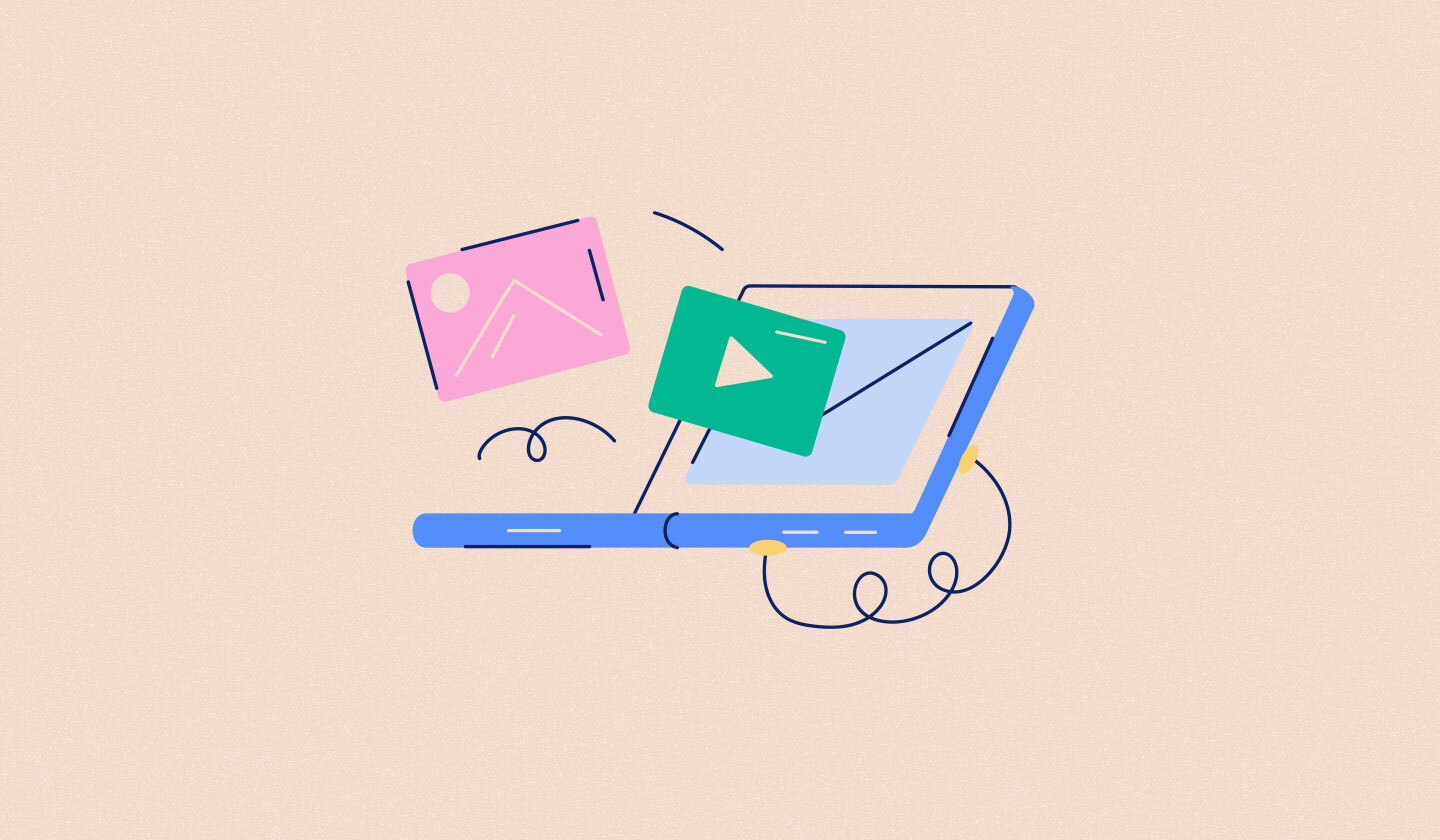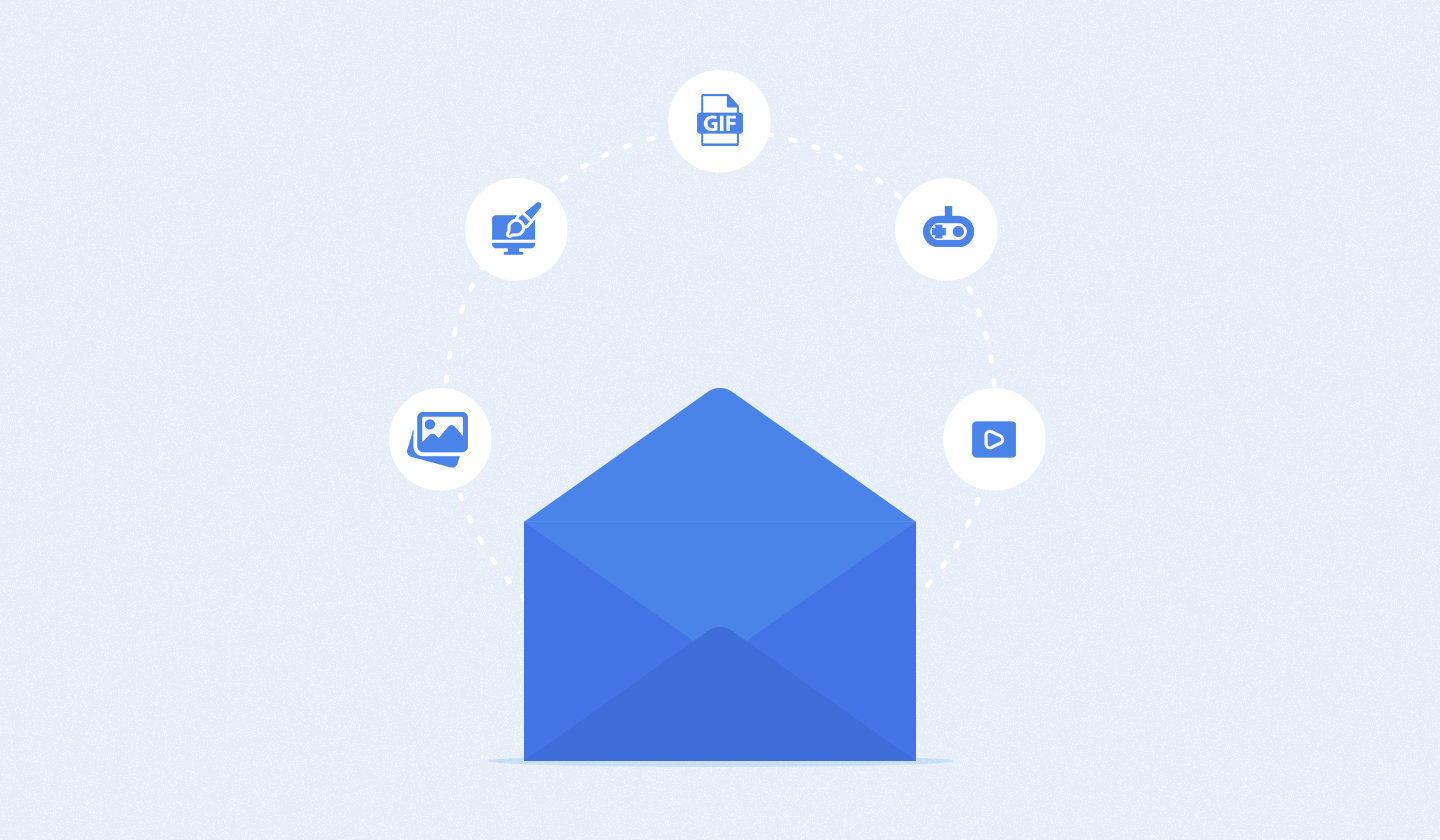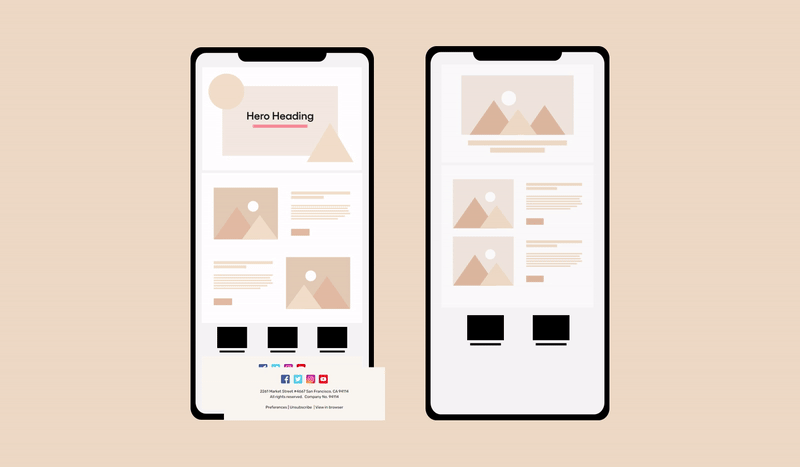Personalizing an email is like writing a movie script, with each recipient as the main character of your story and the email s/he receives as the movie script.
Yeah, that’s right, email personalization is a lot more than just writing your receiver’s name in your email.
Now you must be thinking then how to personalize emails exactly?
Well, sit back and grab your coffee because, in this article, we’ll tell you 10 simple and easy to incorporate techniques to personalize emails. These tricks will boost your email’s conversion rates and increase your customer’s loyalty drastically.
But before moving to that, let’s have a clearer understanding of what exactly email personalization is.
What is Email Personalization?
Email personalization means using your subscribers’ data, such as name, location, or behavior history, to create tailored emails for them.
In other words, it refers to sending relevant emails to the right people at the right time. Email personalization can be divided into 3 different categories or levels.
What Are the 3 Levels of Email Personalization?

Personalization does a remarkable job at improving your customer’s experience. So, you might want to personalize every email to build a stronger connection with your audience.
But the problem is that email personalization takes a lot of time, effort, and money. And all of your subscribers do not invest in your brand equally.
So, we’d recommend you use different levels of personalization for each subscriber in your email list. These levels are; basic, semi-personalized, and hyper-personalized.
Basic level personalization
Basic level personalization is for the price buyers or low-value customers. At this level, you can personalize your emails by adding your customer’s name, designation, or company’s name to create a personalized email copy.
Semi-personalized emails
An advanced version of basic level personalization is semi-personalization. This is for customers who offer you relatively more than the price buyers but lesser than the highest paying customers on your list. They’re commonly known as mid-value customers.
For semi-personalized emails, you can highlight a mutual connection with your recipient in your email or suggest them things to purchase according to their behavior history.
Hyper-personalized email
Then comes hyper-personalization for the highest-paying customers in your email list, also known as the high-value customers. This level of personalization includes extensive research about each customer.
And each hyper-personalized email is thoughtfully created to cater to each customer’s needs or pain points.
This is how you personalize emails for different types of customers. But the real question is, why is personalization in emails so important for businesses anyway?
Why is Email Personalization So Important For Conversions?
The primary reason why email personalization works like wonder is that humans love to be cared for, and personalization gives them that feeling.
That’s why 52% of purchasers expect offers to be always personalized, and 71% of customers say that their interaction with an email is influenced by the level of personalization it offers.
Another reason is that personalization grabs the attention of your recipients instantly.
Want to know how?
Imagine you’re at a party, and 4 of your friends start speaking simultaneously (weird, but just imagine). Their voices cancel each other out, and you can’t understand even a single word. Then suddenly, one of these friends calls out your name.
His/her voice will suddenly catch your attention. This is because we instantly become attentive when our name is being called out - this reaction is known as the cocktail party effect.
And this is why a personalized email stands out in a cluttered inbox.
Because of this attention-grabbing quality, email personalization is good at increasing open and click-through rates.
Plus, personalization makes your subscribers feel special and encourages them to engage with your email.
This increased engagement resultantly boosts revenue. That’s why organizations that personalize their emails witness 17% more revenue.
The benefits of email personalization are enough to raise eyebrows and convince you to start personalizing your emails instantly. So let’s hop on and learn the essential steps to create personalized emails.
How to Personalize Emails for Greater Revenue?
Your consumers crave customized experiences and goods; that’s why every time you see a Starbuck’s cup or a Coke bottle with your name on it, you instantly flaunt it on social media.
So, here are some easy ways to make your customers feel special.
Step 1: Create an authentic email list
The first step for creating a personalized email is collecting relevant subscribers or subscribers who want to hear from you. Here’s how you can make the right email list.

Opt-in forms and lead magnets
You can use opt-in forms or lead magnets on your website to collect email addresses. Lead magnets attract subscribers by offering them incentives (such as downloading a pdf file) in return for their email address.
Whereas opt-in forms are sign-up forms that give your blog or website visitors an option to receive emails from your brand.
This way, your subscriber will submit his/her email address in return for a service s/he’s enjoying.
Use social media advertising
The world spins around social media these days, and there’s no denying that.
You can catch the attention of your potential customers through social media and give them a link to sign up to your email list. It’s pretty fruitful.
Step 2: Segment your email list
Once you’ve created an email list, it’s time to segment them according to different factors.
These factors can be demographic, psychographic, geographic, or behavioral. That totally depends on your choice.
Integrations like Yieldify and Sleeknote are excellent at collecting customer’s data.
They do so by paying special attention to your customer’s browsing history and keywords to which they respond to. This data enables you to understand your audience and segment them accordingly.
And once you’ve understood your customers and segmented your email list, you can continue to personalize your emails.
Step 3: Start personalizing
Now, this is the real deal.
You can personalize your emails in different ways depending on your campaign, intent, or customer. Here’s how.
10 Way To Personalize Emails to Win Over Your Subscribers
Following are 10 ways to personalize emails to convince your readers to respond to you and boost conversion rates.
1. Personalize by adding names
"Remember that a person's name is, to that person, the sweetest and most important sound in any language.” - Dale Carnegie.
It's the oldest trick in the book (of email personalization) and always works.
Add your recipient’s first or last name to your email with the help of merge tags to grasp their attention and make them feel special.
But you must be careful; adding their name once or twice might look appealing, but if you overdo it, it will freak them out.
So, try to add your recipients (or company’s name) wisely and after a certain gap.

2. Personalize in the form of triggered emails
Triggered emails are sent to your subscribers based on their actions, behaviors, or demographics.
They drive 24 times more revenue per email sent. So, if you haven’t sent out one, you must do so ASAP.
Triggered emails enable you to understand each customer better and push him/her further down the sales funnel. They’re also great at recapturing customers who haven’t engaged for quite some time.
Triggered emails can include welcome emails, abandoned cart emails, transactional emails, etc. Recipients are more likely to respond to these emails because they are timely and relevant.
Hence, excellent at providing a personalized experience.
3. Personalize your email’s subject line
A subject line is the first thing that catches your reader’s attention, so don’t forget to personalize it.
You’ll be convinced even more when you know that emails with personalized subject lines increase open rates by 26%.
And we’d also want you to know that the better you personalize your email’s subject line, the greater the chances are for your emails to get engaged.
For instance, a subject line that says “Hi Jennifer, check our new collection!” will catch your recipient's attention, but a subject line that says “Jennifer, are these the eyeshadows you were looking for?” sounds even better.

4. Personalize according to your subscriber’s preference
The advantages of this type of personalization are highly underestimated. And this needs to change.
Imagine you put in so much effort to create and send a highly personalized email to your subscribers, and they don’t interact with it because it wasn’t sent at the right time.
Sounds like a nightmare, right?
To avoid this, you should set a preference center and give control to your subscribers to choose when they want to receive emails from you or what kind of emails they should receive from you.
Such as a subscriber, Emma, would want to receive an email every week on Tuesdays, while a subscriber, Jenny, would wish to receive your emails only on the 15th of every month.
Try it out, and you’ll be amazed at how the engagement rate of your emails escalates.
5. Personalize according to the buyer’s persona
This technique is for customers who you shortlisted for hyper-personalization.
So, you’d have to know your customer pretty well for this kind of personalization. Once you do, divide them according to their job designation, pain points, or demands.
Then create personalized emails and send them to all those subscribers you grouped together. For instance, all marketing managers might have similar pain points or needs, so you can cater to them accordingly.
This is a wonderful way to make your subscribers feel connected and let them know that you understand and care for them.

6. Personalize the sender’s name
Now, personalization shouldn't only revolve around your subscribers and email’s content, but you should also try to personalize the sender's name (or yourself, in other words).
The “from” section of your email plays a very important role in deciding whether your emails will be opened or not.
And since you’re trying your best to build a stronger connection with your audience, we’d recommend you send your emails from a real person’s email address rather than your company’s. Because the latter looks like it's automated and sent in bulk.
You wouldn’t want your efforts to personalize emails go in vain because of the sender’s name, right? So make sure you send it from an actual person’s email address.
7. Personalize according to browsing history
You can create and send emails to your subscribers based on their browsing.
Showing your subscribers what they are interested in will increases their chances of acting in your favor.
Let's assume you were looking for a pair of sunglasses, and a certain company sends you an email showing their new collection of shades. You’ll not just be happy to receive such an email but most likely engage with it as well.
Browsing history also enables you to cross-sell or up-sell your product.

8. Personalize using elements in the email
Ensure you pay special attention to your email’s copy and design elements while personalizing your emails.
Email Copy
Your email copy speaks on your behalf, so make sure it perfectly conveys your message.
Ensure that you write it in such a way that your receiver feels like you’re talking directly to them. After all, you want your recipients to connect with you on a personal level.
Email Design
Your email design can include elements like GIFs, images, or videos.
Ensure that you also personalize these elements. For example, if you’re sending an abandoned cart email, make sure that you add the images of the product that your recipient abandoned.
This will add more weight to your message and make it look more presentable.
Speaking of presentable email designs, you can create outstanding email designs with Unlayer and personalize each email template with the help of merge tags.
9. Personalize by complimenting your subscribers
Who doesn’t love compliments?
Send your subscribers compliments for their achievements, recent work, or choice.
This again is for subscribers that you selected for hyper-personalization. As we mentioned earlier, this can be done by tracking them down through integrations and analytical tools.
10. Personalize by mentioning a mutual connection
A personalized email from a known entity may appear pleasing, but if your recipient doesn’t know you well, personalization may appear inappropriate (read: creepy).
Imagine someone you haven’t interacted with before starts talking about your interests. Gives off YOU (the creepy Netflix season) vibes, right?
To avoid this, you can highlight a mutual connection or a friend. This will give a base for your future relationship with your customers, and they’ll entertain your emails as well.
Personalizing emails by mentioning mutuals is a classic example of semi-personalizing emails. However, this works more for B2B companies than B2C.
And this is it; these are the 10 best ways to personalize your emails. Try them out and witness your engagement rates and revenue boosting like crazy. Now let’s talk about some brands that mastered the art of email personalization.
Brands That Personalize Emails Like Pros
Here are some outstanding personalized emails that we’d like you to see before you start creating one.
Netflix
This is one of our favorite examples of email personalization from Netlfix. They send recommendation emails to their subscribers to watch shows based on their watch history.
If you’re like us and contemplate a lot on which show to watch now, such an email will encourage you to follow their suggestions.

You might have seen memes about Facebook eavesdropping? That’s because Facebook has mastered the art of personalization, and users get stunned at how well they do so.
This email below is one such example of how Facebook not only knows everything about you but also ensures that they celebrate these moments with you.
Notice how the email design is simple and sweet - a thumbs-up sign holding balloons and a precise birthday wish.
A takeaway message from this email will be that you don’t need to go the extra mile with your email design for email personalization; you just need to show that you care.

Harvest
Harvest sent this email to a new customer. It’s a lovely gesture to ensure that your new customers easily understand and get started with your services.
The email design and copy perfectly goes with the message as well.

FAQs About Email Personalization
We came across some FAQs about email personalization and thought you’d find them insightful as well.
What elements in an email can you personalize?
For basic email personalization, you can include your subscriber's name in the email’s subject line. Whereas for advanced email personalization, you can change the content of your email based on your subscriber's personal information.
What is the function of email personalization?
The main goal of email personalization is to deliver email content in a way that it matches a specific user’s needs or interests.
Why is email personalization important?
Email personalization improves relationships with customers, increases customer loyalty, boosts revenue, and enables you to understand your customers better.
Takeaways
Now you’ve learned everything about how to personalize emails successfully and according to each recipient.
Just incorporate the tips mentioned above, and you’ll ace your campaigns. Good luck!





